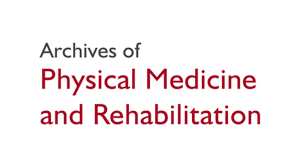Objective
To investigate the efficacy of virtual reality (VR)- and gaming-based interventions for improving upper extremity function poststroke, and to examine demographic and treatment-related factors that may moderate treatment response.

Data Sources
A comprehensive search was conducted within the PubMed, CINAHL/EBSCO, SCOPUS, Ovid MEDLINE, and EMBASE databases for articles published between 2005 and 2019.
Study Selection
Articles investigating gaming and VR methods of treatment for upper extremity weakness were collected with the following study inclusion criteria: (1) participants aged 18 years or older with upper extremity deficits; (2) randomized controlled trials or prospective study design; (3) Downs-Black rating score of ≥18; and (4) outcome measure was the Wolf Motor Functioning Test, the Fugl-Meyer, or the Action Research Arm Test.
Data Extraction
Thirty-eight articles met inclusion criteria. The primary outcome was proportional improvement on the Wolf Motor Functioning Test, Fugl-Meyer, or Action Research Arm Test. The following individual or treatment factors were extracted: VR or gaming dose, total treatment dose, chronicity (> or <6mo), severity of motor impairment, and presence of a gaming component.
Data Analysis
Random effects meta-analysis models were utilized to quantify (1) the proportional recovery that occurs after VR or gaming; (2) the comparative treatment effect of VR or gaming vs conventional physiotherapy; and (3) whether the benefit of virtual reality differed based on participant characteristics or elements of the treatment.
Results
On average, VR or gaming interventions produced an improvement of 28.5% of the maximal possible improvement. Dose and severity of motor impairment did not significantly influence rehabilitation outcomes. Treatment gains were significantly larger overall (10.8%) when the computerized training involved a gaming component vs just visual feedback. VR or gaming interventions showed a significant treatment advantage (10.4%) over active control treatments.
Conclusions
Overall, VR- or gaming-based upper extremity rehabilitation poststroke appears to be more effective than conventional methods. Further in-depth study of variables affecting improvement, such as individual motor presentation, treatment dose, and the relationship between them, are needed.
Karamians R, Porffitt R, Kline D et al
Archives of Physical Medicine and Rehabilitation
 Blog de Fisioterapia Fisioterapia
Blog de Fisioterapia Fisioterapia



